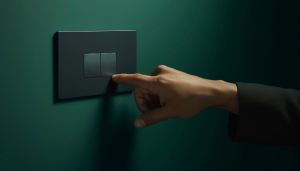Picture this: you’re sipping avocado toast in your kitchen or chilling at a café, when you suddenly remember — the important file is still on your desktop. Cue panic. Remote Desktop lets you hop into your Windows 10 machine and grab whatever you need. Sounds like sorcery? It kind of is… until Windows decides to throw a tantrum.
Setting it up can be smooth like butter — or turn into a three-hour showdown with Windows Firewall and network settings. Stick around; we’ll guide you from “does this even exist?” to “it works, finally!”
Check if Your Windows Version Plays Nice
Not every edition of Windows 10 lets you accept Remote Desktop sessions. Here’s the breakdown:
Windows 10 Home? Sorry, buddy — you can’t host a remote session.
Windows 10 Pro, Enterprise, or Education — jackpot, you’re good to go.

If you’re on Home, there’s no GUI option to enable it. You can still remote in using third-party tools like TeamViewer or AnyDesk, which we’ll touch on later.
To find out your edition, press Win+X, go to System, and check under Windows specifications. Once you’ve confirmed you’re on Pro (or higher), let’s move on.
Enable Remote Desktop (It’s Easier Than You Think)
Enabling Remote Desktop may sound advanced, but it’s really just a few click-throughs:
- Open Settings → System → Remote Desktop
- Toggle the switch to Enable Remote Desktop
- Keep the PC awake, even when locked
- Add users if needed (if you’re not Administrator)
That’s it. You’ve activated the host side of things. Congratulations, you’re officially a remote wizard.
But wait — there’s more: Windows might ask for confirmation related to network permissions and firewall rules. Always say yes — otherwise, your magical portal remains closed.
Firewall, Ports, and Network Types — the Real Hurdles
Here’s where things usually get messy. Even after enabling everything, your PC might be stubbornly inaccessible. That often comes down to firewall settings or how your network is configured.
First, confirm that Windows Firewall has automatically opened port 3389 for Remote Desktop. You can check this under Control Panel → System and Security → Windows Defender Firewall → Allow an app or feature. Make sure Remote Desktop is checked for both Private and Public networks.
Next, consider how you’re connecting:
- Local network? You just need the IP address of the host PC, then connect from another Windows device using the Remote Desktop Connection app.
- Internet connection? Brace yourself — you need to set up port forwarding on your router. Basically, tell your router, “Hey, anyone who asks for my IP + port 3389 goes to my PC.” Not complicated, but requires router access.
A word of caution: exposing RDP to the internet is a security risk. Always use strong passwords, keep software updated, and consider setting up a VPN instead of plain port forwarding.
Troubleshooting Checklist (Because Tech Is Snobby Sometimes)
Here’s a step-by-step troubleshooting lineup to run through if remote access fails:
- Ensure Remote Desktop is toggled on
- Confirm your edition is allowed (not Windows Home)
- Check firewall allows Remote Desktop traffic
- Use /whoami and /ipconfig to verify username and IP
- If connecting over the web — router’s port forwarding is correct
- Use VPN if available (and safer than opening ports)
- Restart the host PC — the classic “turn it off and on” always helps

Step through this and you’ll likely find what’s broken. If everything seems right and it’s still not working, your network might be the culprit — or something weird like a pending Windows update.
Alternatives When RDP Fails or Isn’t Available
Not all adventures go smoothly. If your Windows edition doesn’t support it, or if router settings are messing with you, don’t panic — there are other options that work great:
- TeamViewer — installs straight on both machines, connects through TeamViewer servers, cross-platform. Great for everything.
- AnyDesk — similar to TeamViewer and fast. Free for personal use.
- Chrome Remote Desktop — runs inside Chrome browser, simple setup, works on most devices. Super convenient for occasional use.
These tools bypass all the Windows nonsense and usually just work. Perfect for occasional remote tasks.
Final Thoughts: Remote Desktop Is Your Swiss Army Knife
Learning how to enable Remote Desktop on Windows 10 is like unlocking secret powers. You can access your PC from anywhere, pick up where you left off, and stay productive — even in weird setups like airplanes (with decent wifi).
Just be smart about security: strong credentials, updates, and avoiding plain internet exposure. Sometimes it’s the simplest safety steps that keep your virtual door locked.
Now, go take control of your computing universe — remote or not. You’ve earned that win today.